Embark on a journey to enhance your watercolor painting skills by mastering the intricate technique of outlining. The art of outlining in watercolor brings depth, definition, and a captivating visual appeal to your creations.
In this comprehensive guide, we’ll explore how to outline watercolor painting and unravel the secrets behind creating stunning outlines that seamlessly complement your watercolor masterpieces.
Discover the fundamental principles of selecting the right tools, from fine brushes to waterproof pens, to achieve precision in your outlines. Uncover essential tips on choosing the perfect colors for your outlines, enhancing the harmony of your artwork.
Whether you’re a beginner seeking foundational knowledge or an experienced artist looking to refine your techniques, this guide will empower you to confidently outline your watercolor paintings with finesse.
Elevate your artistic expression as we delve into the nuanced world of watercolor outlining, unlocking the potential to transform your paintings into captivating works of art.
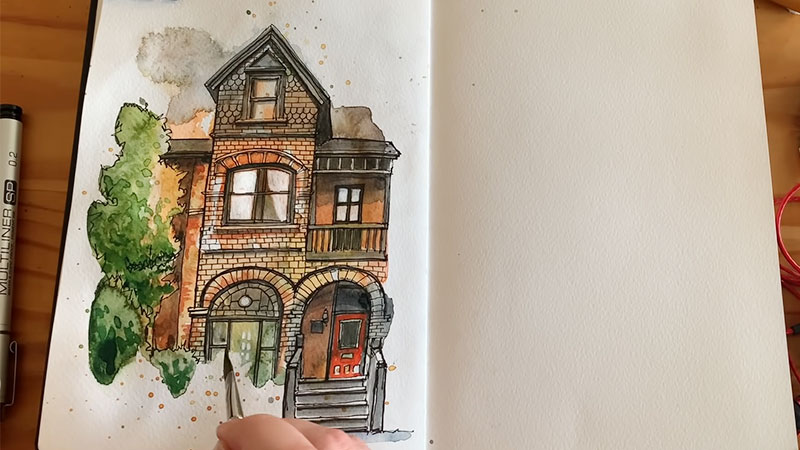
How to Outline a Watercolor Painting?
Outlining watercolor painting adds definition and visual interest to your artwork. This technique requires a delicate balance, as watercolor is known for its fluidity and transparency.
Here’s the step-by-step process of creating outlines for watercolor painting, covering tools, techniques, and tips to enhance your skills.
Gather Your Materials
Before diving into outlining, ensure you have the right tools. Fine-tip brushes, waterproof pens, and pigment liners are ideal for creating precise lines without smudging the watercolor beneath. Select a waterproof ink that won’t bleed when it comes into contact with water.
Plan Your Composition
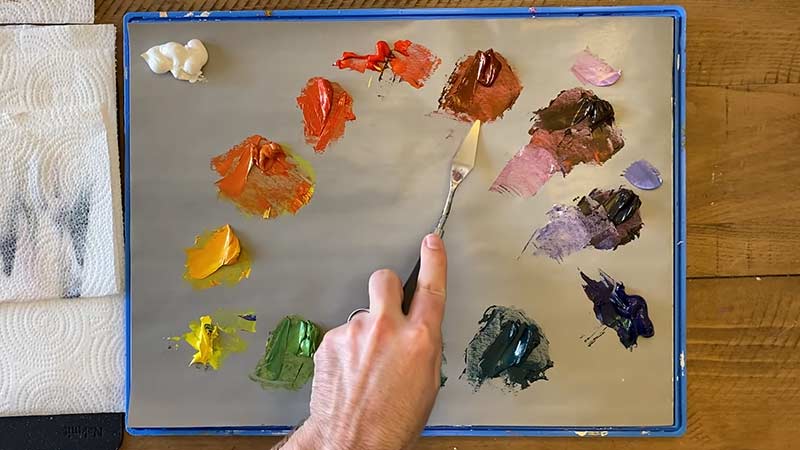
Outline with purpose by planning your composition. Consider where you want emphasis and define focal points. A well-thought-out composition will guide your outlining process, adding structure to your painting.
Establish Your Watercolor Base
Begin with a solid watercolor foundation. Let the colors mingle and flow, embracing the fluidity of watercolor. Ensure your paper is of good quality to absorb and retain the vibrancy of the pigments.
Choose Your Outlining Technique
There are various techniques for creating an outline for watercolor painting. Experiment with wet-on-wet outlining, where you apply the outline while the paint is still wet, or try wet-on-dry outlining for a crisper edge. Each technique offers a distinct aesthetic, so choose based on your artistic vision.
Test on Scrap Paper
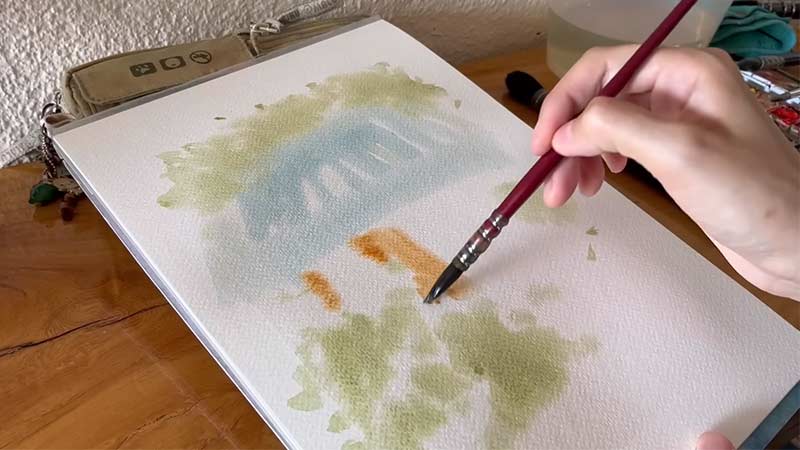
Before outlining your main painting, practice on scrap paper. This allows you to get a feel for the pressure, ink flow, and style you want to achieve. Testing beforehand helps avoid unexpected results on your final piece.
Select Appropriate Colors
Choose colors that complement your watercolor palette. Opt for a color slightly darker than the adjacent area to create a noticeable contrast. Experiment with different color combinations to find what suits your painting best.
Embrace Negative Space
Effective outlining doesn’t always mean continuous lines. Embrace negative space by leaving gaps in your outline, allowing the watercolor to shine through. This technique adds visual interest and a dynamic quality to your artwork.
Vary Line Thickness
To create depth and dimension, vary the thickness of your lines. Use a finer line for intricate details and a bolder line for more substantial elements. This variation adds a dynamic quality to your painting.
Be Mindful of Transparency
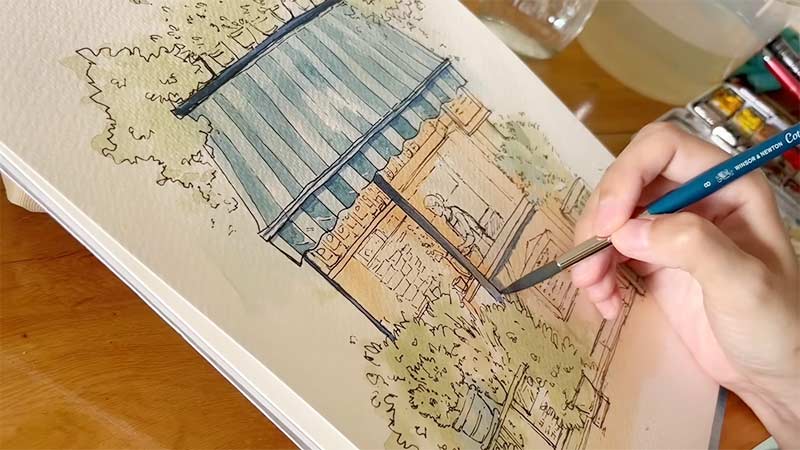
Remember that watercolor is transparent, and heavy outlining may overpower the delicacy of the medium. Aim for a balance where the outline enhances without overshadowing the watercolor beneath.
Focus on Details
Pay attention to details, especially in the focal points of your painting. Fine lines and intricate details can bring your subject matter to life, adding a layer of refinement to your watercolor masterpiece.
Allow for Drying Time
Once you’ve completed outlining watercolor, allow your painting to dry completely. Rushing this step may lead to smudging or unintended blending. Patience ensures that your outlined details remain crisp and well-defined.
Evaluate and Adjust
Step back and evaluate your watercolor outlines from a distance. Assess the overall effect of your outlining and make any necessary adjustments. It’s okay to refine your lines or add additional details at this stage.
Seal with Fixative (Optional)
For added protection, especially if using pens, consider sealing your watercolor painting with a fixative spray. This step helps prevent smudging and ensures the longevity of your outlined details.
Practice Regularly
Congratulations! Now you know how to outline watercolor. Outlining in watercolor is a skill that improves with practice. Experiment with different subjects, styles, and techniques.
Embrace the learning process, and over time, you’ll develop a unique outlining style that complements your artistic expression.
What Is the Purpose of Watercolor Outline?
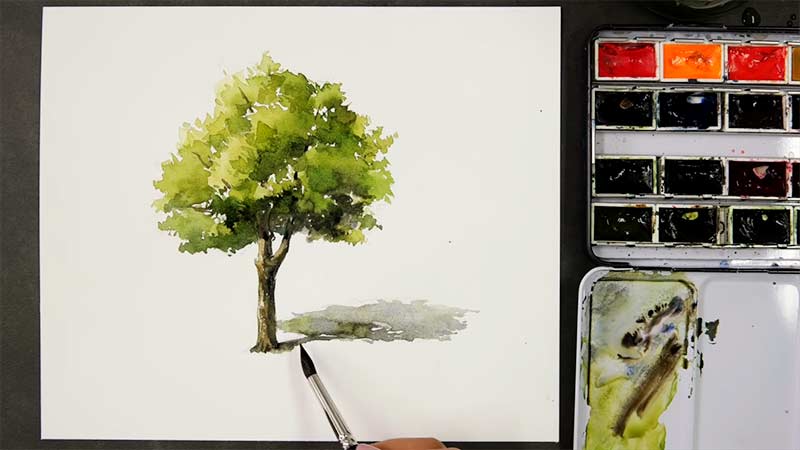
The purpose of a watercolor outline extends beyond mere delineation; it serves as a nuanced technique that can elevate a painting’s aesthetic, provide structure, and add a layer of complexity to the artwork. Do you outline before watercolor? Well, you should. Here’s why:
Defining Form and Structure
The primary purpose of watercolor outlines is to define the form and structure of the subject. In watercolor painting, where colors often bleed and blend seamlessly, outlines act as visual boundaries, offering clarity and delineating different elements within the composition.
This is particularly crucial when depicting intricate details or complex subjects.
Creating Contrast
When you outline watercolor, it allows you to create contrast within a painting. By using a darker or contrasting color for the outline, artists enhance the visibility of the subject against the surrounding colors.
This heightened contrast brings attention to focal points, adding visual interest and guiding the viewer’s gaze.
Emphasizing Focal Points
Watercolor outlines can be strategically applied to emphasize specific areas of the painting, acting as a visual cue for the viewer.
Whether highlighting the eyes in a portrait or outlining the central figure in a landscape, this technique directs attention and adds emphasis to crucial elements, enhancing the overall impact of the artwork.
Adding Detail and Refinement
Outlining allows artists to introduce intricate details and refinement to their paintings. Fine lines can delineate intricate patterns, textures, or subtle features that might get lost in the fluidity of watercolor. This meticulous detailing adds depth and a layer of sophistication to the overall composition.
Creating Visual Interest
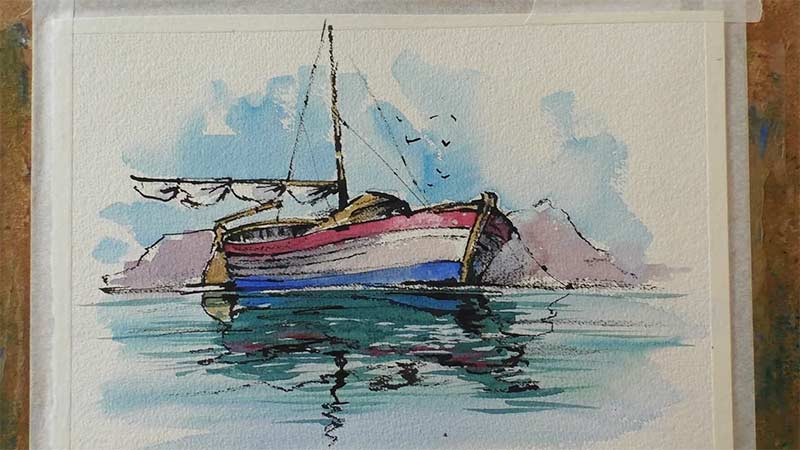
The dynamic interplay between watercolor and outlines creates visual interest. The transparency of the watercolor juxtaposed with the defined lines of the outline offers a harmonious contrast, captivating the viewer’s attention.
This juxtaposition introduces complexity, making the artwork visually engaging and compelling.
Expressing Style and Individuality
Watercolor outlines provide a unique avenue for artists to express their style and individuality. The choice of line thickness, the use of negative space, and the overall approach to outlining contribute to the artist’s distinctive voice.
This personal touch becomes an integral part of the artistic signature embedded in each piece.
Guiding the Viewer’s Eye
The strategic application of watercolor outlines serves as a visual guide, leading the viewer through the painting. By controlling the flow and direction of the lines, artists can influence the viewer’s gaze, creating a narrative or emphasizing specific aspects of the artwork.
Enhancing Realism or Stylization
In realistic watercolor paintings, outlines are employed to capture the intricacies of the subject accurately. On the contrary, in more stylized or abstract works, outlines can be exaggerated or manipulated to achieve a specific aesthetic.
This versatility allows artists to adapt the technique to suit their intended artistic expression.
Providing Stability to Colors
Watercolor outlines act as stabilizing agents, preventing colors from bleeding excessively into one another.
This stability is crucial when artists desire a controlled and defined outcome, ensuring that the intended colors maintain their vibrancy and do not compromise the overall composition.
Setting Mood and Atmosphere
The choice of outline style and its interaction with the watercolor base can influence the mood and atmosphere of the painting.
Soft and delicate outlines may evoke a dreamy or ethereal ambiance, while bold and confident lines can convey a sense of strength and impact.
Achieving Dimension and Depth
Watercolor outlines, when skillfully applied, contribute to the illusion of depth in a two-dimensional medium.
By varying line thickness and strategically placing outlines, artists can create a sense of dimension, making the subjects appear more three-dimensional and lifelike.
Encouraging Artistic Experimentation
Watercolor outlining encourages artists to explore and experiment with different techniques. Whether it’s wet-on-wet outlining, leaving negative spaces, or varying line thickness, this technique provides a playground for artistic innovation and allows for continuous growth and discovery.
FAQs
Why should I use watercolor outlines in my paintings?
Watercolor outlines serve multiple purposes, providing structure, emphasizing focal points, adding contrast, and offering a unique opportunity for artistic expression. They bring clarity to complex compositions and enhance the overall visual appeal of your artwork.
What tools are best for watercolor outlining?
Fine-tip brushes, waterproof pens, and pigment liners are ideal tools for watercolor outlining. These instruments allow for precision and control, ensuring that your outlines complement the fluidity of watercolor without smudging.
Can I use any color for watercolor outlines?
While you can experiment with various colors, it’s often recommended to choose a color slightly darker than the adjacent areas. This creates a noticeable contrast, helping your outlines stand out. Consider the overall color palette of your painting for harmonious results.
Do watercolor outlines work for all painting styles?
Yes, watercolor outlines are versatile and can be adapted to different painting styles. Whether you prefer a realistic approach or enjoy exploring abstract and stylized forms, the technique of watercolor outlining can be tailored to suit your artistic vision.
How can I prevent smudging when using watercolor outlines?
To prevent smudging, allow your watercolor painting to dry completely before applying outlines. If using pens, consider sealing your artwork with a fixative spray for added protection. Patience during the drying process ensures that your outlined details remain crisp and well-defined.
Conclusion
Mastering the skill of outlining in watercolor painting opens a realm of artistic possibilities, allowing you to breathe life and dimension into your creations.
As you’ve learned the intricacies of tools, color selection, and techniques, remember that practice is key to refining your newfound skills.
Experiment with different styles and approaches, embracing the unique character that outlining adds to your watercolor artwork.
Whether you’re outlining landscapes, portraits, or abstract compositions, the knowledge gained from this guide will serve as a foundation for your creative journey.
Now equipped with the insights to confidently outline your watercolor paintings, let your imagination flow freely onto the canvas.
Embrace the beauty of blending vibrant colors with precise lines, creating pieces that resonate with emotion and individuality.
Leave a Reply